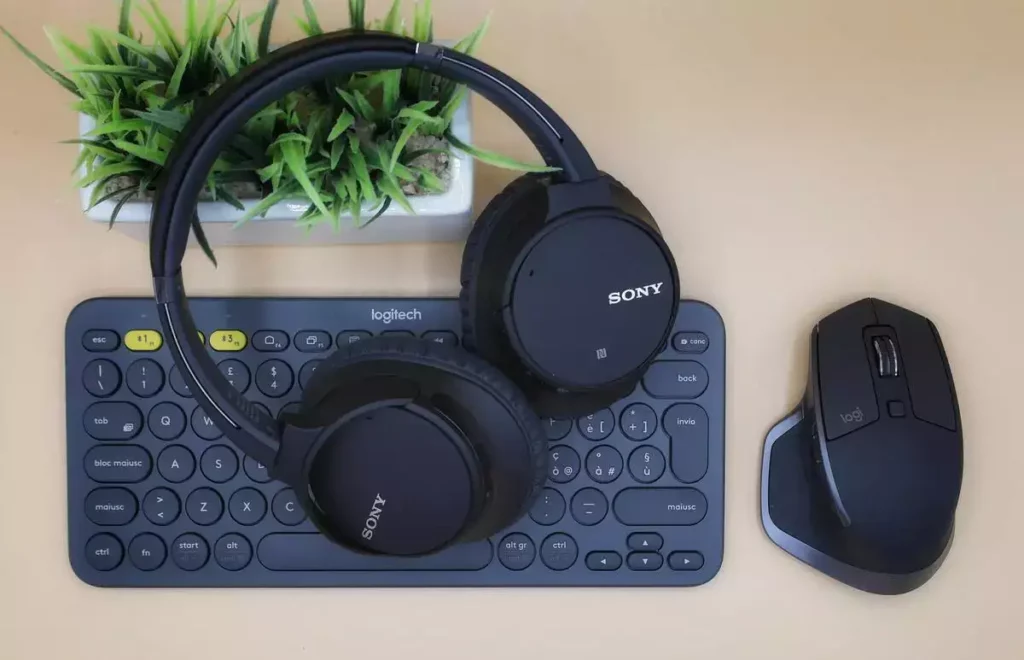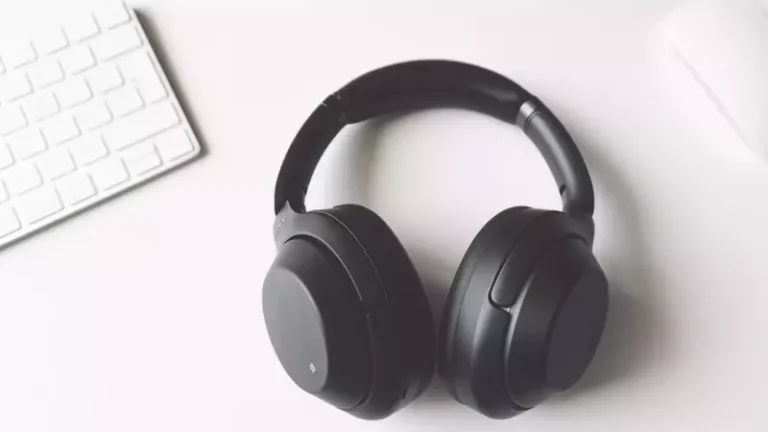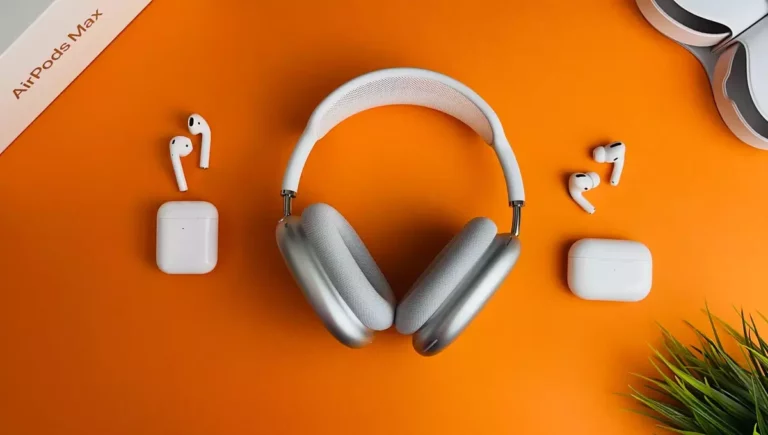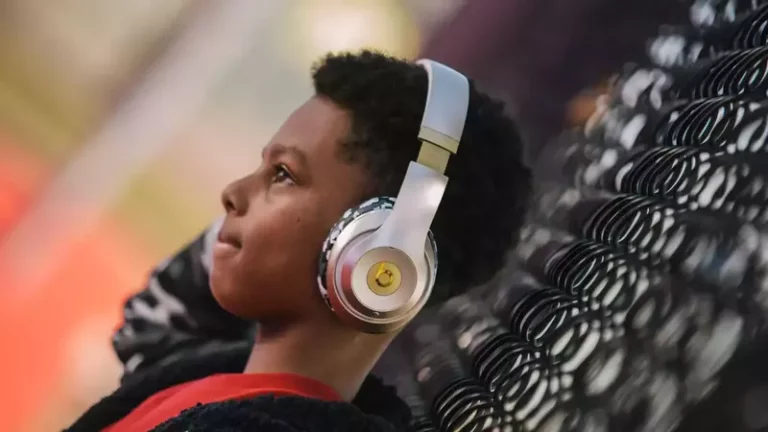Bluetooth 5.0 vs 5.2 vs 5.3: All You Need to Know
This site contains affiliate links to products, and we may receive a commission for purchases made through these links.
One of the premier standards of streaming audio applications and audio devices, Bluetooth continues to innovate and add new features as it develops. Bluetooth’s latest big upgraded version of audio streaming technology is Bluetooth 5.2, introduced at the CES conference in January of 2020. But what kind of upgrades is there between Bluetooth 5.0 vs 5.2 vs 5.3?
Version 5.2 comes with many new features and benefits designed specifically for the next generation of wireless devices and audio technology.
Bluetooth 5.2 was a big update and includes multiple data streams, the ability to connect two devices at once, battery life, and range. In addition, this newest version of Bluetooth also marks the beginning of the next generation of Bluetooth audio, LE audio. Bluetooth 5.3 is a minor update with new features.
In this article, I’m going to cover the most significant improvements coming with Bluetooth 5.2. I will look at the various benefits and features included with the newest version of Bluetooth technology, so keep reading to get all the juicy details.

Bluetooth 5.0 vs 5.2 vs 5.3: The Major Improvements
Here are the major improvements between the different Bluetooth versions. All the updates are described in the article below:
What Was Improved In The Bluetooth 5.0 Version?
So first things first. To understand Bluetooth 5.1 vs 5.2, we first need to talk about Bluetooth 5.0. Now obviously, this is a technology that has gone through many different versions and updates since its inception in the late 90s.
All of the updates from one to four were very important and very substantial, but they were the regular updates that would occur as technology gets better over time. None of them were really super radical, and the most significant tangible changes in Bluetooth technology came when we jumped from 4.2 to 5.0 in 2016.
Among the most prominent features and updates of Bluetooth 5.0 was that it could transfer data at two times the speed of any of the other Bluetooth versions. This is immensely helpful for simple operations such as pairing and eliminating latency when you’re streaming videos over the internet.
Bluetooth 5.0 also greatly increased the range over which signals could be exchanged between devices. The previous range was about 50 feet. It could go farther if there were no obstructions in the way and you had a clear line of sight, but that rarely happens when you’re using Bluetooth in a home or a work setting.
READ MORE!
Different types of Bluetooth Technology and Devices (Explained)
Bluetooth 5.0 increased this to about 120 feet, so you could be in different rooms if you were in your house. Outside in the backyard, there could be lots of stuff in the way, and your signal was still going to remain pretty strong, and it wasn’t going to cut out.
Finally, Bluetooth 5.0 probably changed to a new number of the sequence because it introduced eight times the data capability of the previous versions. Improving your computing speed that much obviously opens up a world of possibilities. One of the most prominent examples of this was the use of dual audio in the Samsung Galaxy S8.
The Samsung Galaxy S8 was the first smartphone to use this feature, and they also named it after the eight times data capability.
Essentially, this means that you can play audio over two connected devices simultaneously. So you could have one phone streaming music to two connected Bluetooth headphones or two different Bluetooth speakers.
Changes like these introduced with Bluetooth 5.0 are obviously significant because they speak to a much larger emphasis on more speed, more data, and more usefulness, which you’ll see has been carried over in these latest updates.
What Was Improved In The Bluetooth 5.1 Version?
It’s important to start here with these fundamental changes that came about due to Bluetooth 5.0 because, as you can tell, 5.1 and 5.2 are built off of that technology. They are more minor updates of the general big update of Bluetooth 5.0.
Now I’m going to get into Bluetooth 5.1, which didn’t see as many significant drastic changes, but there were minor improvements over Bluetooth 5.0.
One of the most significant differences introduced in Bluetooth 5.1 was the use of different direction-finding methods between devices. These different methods are “angle of arrival” and “angle of departure”. They allow your devices to communicate and know precisely where they are in terms of their spatial relationship to one another.
READ MORE!
Are Bluetooth Devices allowed on planes? (Solved)
Previously, Bluetooth technology would have to guess the distance between your devices based on their signal strength, but now this can be much more precise.
Bluetooth 5.1 also introduced improvements in the pairing and caching processes that make discovery and advertising between devices a lot more efficient; advertising here is the term for the processes that devices use to announce that they are ready to pair.
The improvement in this area is due to something called randomized channel indexing. So basically, in previous versions of Bluetooth, a device would have to cycle through a specific set of channels in sequence to find the item that it was trying to pair with.
In Bluetooth 5.1, those channels can be accessed at random without going through all of them in sequence. This makes the process a lot faster and lowers the likelihood of interference between many different Bluetooth devices trying to be connected simultaneously in the same place.
What is Improved in Bluetooth 5.2?
This brings us to the latest big update in Bluetooth technology, and that is Bluetooth 5.2. This is likely going to be a game-changer for technology going forward.
1. LE Power Control Feature (LEPC)
One of the first big things to mention is a new feature of Bluetooth 5.2, which is the low energy power control.
Low energy was first introduced back in Bluetooth 4, but then, it wasn’t quite sophisticated enough to be used with most practical applications such as streaming audio, which is what most people use Bluetooth for. Instead, it was only relegated to operate with much smaller-scale applications such as Fitbit and fitness watches, and other things like that.
With Bluetooth 5.2, much larger amounts of information can finally be transmitted over lower bandwidth and using lower amounts of power. This is achieved thanks to the new LEPC codec.
This codec allows for information to be much more compressed on the input side, which may at first sound like a bad thing, but the reason it works is that it is decompressed much more efficiently and much faster on the output side.
This is great news for those searching in vain for really high fidelity Bluetooth audio because the quality is just going to be much better, and the fidelity is going to be much higher.
This is because that audio information can be compressed small on the input side, saving time and energy. But the audio won’t lose any quality thanks to the speed and the efficiency of the decode on the other end.
This is really exciting and puts us one step closer to truly great hi-fi Bluetooth wireless audio.
Technically, this is how it works:
Wireless receivers have an “optimal received signal strength range” that provides the best signal quality. A receiver with a signal strength higher or lower than the optimal signal range can cause issues when handling the decoding of signals.
LEPC solves this. Using LEPC, a receiving device can keep tabs on its partner device’s received signal strength indicator (RSSI) and request a change in the transmit power level in either direction.
Alternatively, this also allows a transmitter to change the transmitted power voluntarily and relay this information to the receiver.
This capability ensures that both devices will be able to stay within their optimal signal ranges. It will also reduce error on the receiving end and lower the overall power consumption through dynamic power management.
On top of this, LEPC’s ability to manage power can also improve coexistence with other signals in the 2.4 GHz band, which includes signals from WiFi and other signal sources.
2. Enhanced Attribute Protocol (EATT)
Bluetooth version 5.2 comes with an upgraded version of the original Attribute Protocol (ATT) technology, called Enhanced Attribute Protocol (EATT), that allows parallel transactions between two Bluetooth devices to occur simultaneously.
While ATT has traditionally operated in a sequential manner, which means that transactions are performed sequentially, one at a time, EATT can handle concurrent or even parallel transactions between a server and a Bluetooth LE client.
The inclusion of EATT makes it possible to break down L2CAP packets from multiple applications and put them together into smaller, more easily managed chunks. As such, transactions from two or more applications can be processed and completed at the same time.
For instance, this would be super helpful if multiple apps on your smartphone are using a Bluetooth device at the same time. Instead of one being in use while the others are blocked, they can now all operate simultaneously.
This new feature improves user experience in circumstances where multiple applications are using the same Bluetooth LE stack. It can also reduce overall latency between devices. EATT is an optional feature per the specification, and it will require an encrypted connection between both Bluetooth LE devices, which makes it much more secure than ATT.
READ MORE!
Do Bluetooth Keyboards and Mouse Have Input Lag?
3. Isochronous Channels (ISOC)
Another major upgrade from the classic versions of Bluetooth and the early versions of LE, Bluetooth version 5.2, supports isochronous channels.
What this means is basically that it takes the idea of the dual audio feature introduced in Bluetooth 5.0 and takes it even farther, thus allowing for multiple connections of Bluetooth devices to single sources.
So if you’re using wireless headphones at home on your tv, your laptop, and your smartphone, instead of having to switch between the three whenever you want to use them or even having to pair and then unpair to the other ones, you can be connected to all of them simultaneously, and it can switch pretty seamlessly between the three.
So if you’re watching a tv show and you’re streaming that audio, but you get a call on your phone, your Bluetooth headphone can automatically switch to the phone audio and then go back to the tv or even to your computer if you want then to watch a youtube video or something like that.
These isochronous channels can be utilized for any of LE’s variants on the physical layer, including 1M, 2M PHY, and the LE Coded configurations S=8 and S=2.
They also support both connection-focused and connectionless communication which I’ll explain more in-depth below.
What is Connection-focused communication?
In connection-focused mode, each stream of data can be referred to as a Connected Isochronous Stream (CIS). In instances when CIS’s need to be synchronized, for example, when left and right earbuds play audio together, they’re connected by a link in a Connected Isochronous Group (CIG).
CIS’s that are part of the same Connected Isochronous Group (CIG) share the same reference data so they can stream synchronously on multiple different receivers.
Devices loaded with Bluetooth 5.2 can also create multiple of these CIGs. Additionally, CIGs will enable bidirectional data transfer to be performed, so it’s easier for devices to send control data back to the source device.
What is Connectionless communication?
In connectionless communication mode, a single source such as a smart TV can stream data to multiple streams that are synchronized.
In this instance, each stream is called a Broadcast Isochronous Stream (BIS), and each group of BIS’s is called a Broadcast Isochronous Group (BIG). Exactly like with CIGs, devices with Bluetooth 5.2 can create multiple BIGs at the same time.
Bluetooth 5.2’s new isochronous channels support data retransmission for both CIGs and BIGs, but it offers this in different ways.
For CIGs, the master will send a packet to the slave, and the slave will respond with a package for every subevent. With BIGs, alternatively, the master is the only one that sends a packet for each subevent. ISO intervals, which are the intervals at which “events” occur, may range anywhere from 5 milliseconds to 4 seconds.
4. Broadcast Possibilities With Bluetooth 5.2
While connecting multiple devices to one source in your home is super convenient, it’s even more exciting in terms of the broadcast possibilities introduced here once Bluetooth 5.2 is highly integrated with the public.
Let’s say you walk into a sports bar seeing something interesting on TV and then tune your Bluetooth wireless earphones to that stream and be able to receive the audio directly into your ears. Even beyond that, it is possible that everyone watching could be able to select their own language stream of whatever that broadcast is.
This obviously would be pretty revolutionary stuff and would even go beyond our convenience for socializing purposes. The possibilities of all this and more make Bluetooth 5.2 really interesting to keep an eye on and really exciting as a thing that could be widely implemented in the future.

5. LE Audio
ISOC is the foundational technology for LE Audio and Bluetooth LE’s new audio codec LC3 (Low Complexity Communications Codec).
LE Audio is a noticeable improvement on Bluetooth Classic and Bluetooth LE, and it requires less power and less bandwidth while still enabling high-quality audio transmissions. This, in turn, allowed for refined sound quality and extended headset battery life, both of which are two critical benefits for many audio device manufacturers.
LC3 builds on and optimizes Bluetooth LE’s existing codec by compressing audio transmissions and scaling them down to extremely low bit-rates and does this all without compromising the quality of audio. According to Bluetooth SIG, LC3 also has a much better sound than SBC, which is Bluetooth Classic’s standard codec.
Bluetooth version 5.2 and LC3 are revolutionizing how consumers use Bluetooth audio devices. Since LC3 can multi-stream and offers support for multiple synchronous connections by default, True Wireless users will be able to enjoy faster pairing and significantly improved battery life.
As far as hearing aid technology goes, the future is bright thanks to LC3 and LE audio. At the CES conference in 2020, Bluetooth presenters demonstrated a small sound emitter device powered by LC3 that allowed hearing aid users to make a direct connection into the audio source with their audio devices.
Additionally, LC3 uses only small amounts of power and is energy-efficient, enabling manufacturers to build smaller, more discreet hearing aids that can last longer on a single charge.
What is Improved in Bluetooth 5.3?

The following modifications have been made in Bluetooth 5.3, which is a minor update to Bluetooth 5.2 version:
1. Periodic Advertising Enhancement
Normally, Bluetooth transmitting devices will send the same data out many times to make sure it is received, but this innovation means that the received data only needs to be examined once and duplicates will be instantly deleted.
Even receiving devices may benefit from this efficiency in terms of energy savings.
2. Encryption Key Size Control Enhancements
The security of encryption used by Bluetooth devices to safeguard transmitted data is in part controlled by the length of the key. By enabling the host to define a minimum key size, this enhancement reduces the amount of back-and-forth communication between the transmitter and receiver on this subject.
3. Connection Subrating
This feature enables quick switching between low-duty and heavy-duty cycles, which is meant to improve user experience.
For example, Bluetooth hearing aid users will typically have their device on a low-duty cycle, but the quicker it can switch to a high-duty cycle when they receive a call or play music from their smartphone, the better for the user experience.
4. Channel Classification Enhancement
When data packets are transferred over many frequencies, this improvement enables channel classification on the part of peripheral Bluetooth devices.
This was previously only feasible through the Central device, but the new approach will reduce the likelihood of packet collisions and boost throughput.
Final Thoughts
You can now find Bluetooth 5.2 and all of the great features I explained above in many different devices from 2021 wireless earbuds, including devices from major providers like Sony, Samsung, and Beats.
Bluetooth 5.2 comes with a focus on offering a wide range of improvements to audio devices, which is excellent news for you!
The main new idea for you to grasp here (along with plenty of pretty technical yet largely extraneous information) is LE Audio, an abbreviation for Low Energy Audio. There’s also a new audio codec called LC3, which allows for high-quality audio with reduced power consumption with this new feature.
Bluetooth 5.2 also allows you to utilize multiple synchronized data streams at once. I know; clarification on what that means may be needed.
Looking back to my earlier explanation, you can think of your wireless earbuds as an example: before 5.2, you would connect only one earbud to your phone, and the second bud would connect to the first one.
Having both earbuds directly connected to your device (which means multiple streams) will improve the quality of the connection. It will also reduce potential delay or sync issues that sometimes happen between the left and right earbuds.
Other perks I talked about with 5.2 include the ability to connect two sets of headphones to one device (which was not possible until this new version) and the option to choose which earbud you want to use. This is useful if you only want to use one at a time.
READ MORE!
10 Smart Bluetooth Devices to Take Your Home To The Next Level
And finally, the use of hearing aids is greatly improved due to the new technology included with Bluetooth 5.2. They can run for much longer on a single charge, and they can also be made in much smaller units while appearing more discreet.
While it may be an update that has occurred over just one decimal point, I genuinely think that Bluetooth 5.2 is going to be revolutionary in the way it allows us to be entertained, enable us to interact, and the way it will allow us to communicate with each other.
I hope I’ve answered all your questions about Bluetooth 5.2 in the information I’ve outlined above, hopefully allowing you to make Bluetooth decisions with confidence. For all things Bluetooth, check out some of our other articles on this site and be ready to have all your potential questions answered.

Espen
Espen is the Director of ProPairing and has written extensively about Bluetooth devices for years. He is a consumer product expert and has personally tested Bluetooth devices for the last decade.






